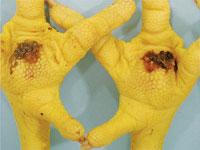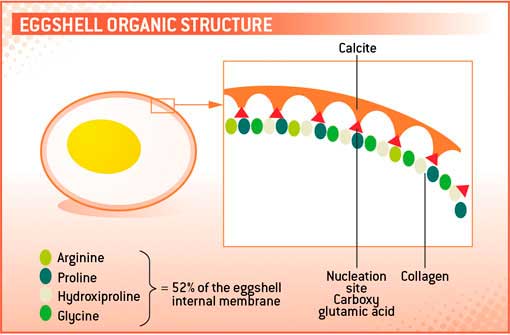Zinc provides key to more valuable feet

Foot pad dermatitis is characterised by erosive lesions of the foot pad. It begins as contact dermatitis, which can lead to ulceration of the skin at the hock joint and the plantar surface of the feet.
Lesions usually start as a thickening of the reticular scales, causing cracks that expand to broad ulcers. In extreme cases, the bird may have difficulty moving and secondary infections can occur, leading to partial condemnation of the carcass in the processing plant.
Yet chicken feet are a highly valued consumer product in Asia and the increasing demand from that part of the world has made them an important export commodity for the EU broiler industry.
The sales value of these feet, however, is significantly reduced if quality is substandard due to downgrades such as contact dermatitis (litter burns) – not to mention the welfare considerations for the bird itself.
Causes of pododermatitis
There are a number of variables that contribute to the incidence of litter burns, including bird size, stocking density, litter condition and feeding programmes.
Researchers at Auburn University, Alabama, USA, have shown that, while the level and severity of footpad lesions may differ according to the type of litter used, the problem is at its worst when birds face late exposure to moist litter.
Controlling footpad lesions therefore starts with controlling litter condition through limiting stocking density, improving in-house climate control and adjusting feeding programmes to prevent wet droppings.
The effect of zinc
Field reports, however, frequently suggest that a high incidence of litter burns is also possible from flocks with good quality litter.
This problem typically arises when providing high protein feeds and/or high levels of soya bean meal.
This possible association between an increase in pododermatitis and all-vegetable feeds prompted Prof Sergio Vieira and fellow researchers at the Federal University of Rio Grande do Sul in Brazil to take a closer look.
He concluded that birds fed all-vegetable diets based exclusively on corn and soybean meal showed an increased potential to develop footpad dermatitis, as well as to produce excreta with a greater percentages of moisture, when compared with those fed diets with inclusions of poultry by-product or corn gluten meal.
Follow-up research at Auburn and Rio Grande do Sul on behalf of Zinpro Performance Minerals also showed improvements in pododermatitis levels when complexed zinc was included in broiler feeds, either in place of inorganic sources or when added to existing trace mineral pre-mixes (see below).

Not only the percentage of burns dropped, but zinc also dramatically reduced the severity of lesions, with considerable associated economic benefits.
According to Auburn University researcher Benya Saenmahayak, diet supplementation with zinc amino acid complexes increased the number of salable feet significantly.
It also had a positive effect on bodyweight and feed conversion, with zinc-treated birds showing significantly higher fillet and breast meat yields.
These research findings show that dietary zinc from complexed sources reduces the incidence and severity of foot pad lesions, and as a result bird performance may improve resulting in higher returns at farm as well as processing level.
* Wiebe van der Sluis is the former editor of World Poultry and now works as an industry PR consultant based in Holland.
